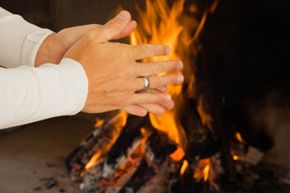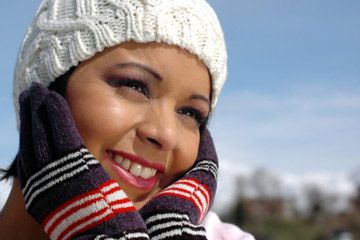The word chilblains may sound old-fashioned to many of us -- an ailment like lumbago or rheumatism that might have afflicted our great-grandparents. But chilblains are still very real. Today, the condition is also known as perniosis or pernio, but all the terms mean the same thing: a painful skin problem that results from exposure to cold and damp. The number of people in the U.S. who have contracted chilblains is not known, but in Britain, one in 10 is affected every year [source: Maroon].
Doctors aren't entirely sure what causes chilblains. The condition tends to develop when a person is exposed for a period of time to cold but not freezing conditions -- that is, temperatures from 32 to 60 degrees Fahrenheit (0 to 15 Celsius) [source: NIOSH]. The cold causes tiny blood vessels to constrict, usually in locations that have the poorest circulation like the fingers and toes (the ears, nose and cheeks can also be affected). When the flesh is rewarmed quickly, blood can leak from these vessels. The result is swelling and inflammation accompanied by itching and pain: chilblains.
Advertisement
Dampness also seems to be a contributing factor. The disease is less common in cold, dry climates than in moderate, damp ones. This may be partly because people in the colder areas tend to take more precautions against the cold [source: NIOSH].
Chilblains differ from frostbite, a more serious cold-weather condition in which flesh actually freezes. Nor are chilblains the same as hypothermia, an overall drop in body temperature that can be life-threatening. A similar condition, trench foot, results from prolonged immersion in cold water, but it's much more severe than chilblains and can lead to gangrene [source: Doerr].
Chilblains most commonly affect children and young to middle-aged women; it's not known exactly why. Those who have poor circulation are more likely to contract the condition, and it occurs more often in thin people. Smoking, drinking coffee and taking decongestants, all of which restrict circulation in the skin, can contribute as well. If members of your family have had chilblains, you are also more likely to have them.
Some drugs, such as beta-blockers, may worsen chilblains, though they don't actually cause the condition [source: Newson]. The pressure from tight shoes or from bunions and corns, which limits blood circulation, can bring on chilblains in the cold. When tight, low-slung jeans became fashionable, doctors began to see cases of chilblains in the young women who wore them during the winter [source: Weismann]. The clothing restricts circulation even as it exposes skin to cold, creating the right conditions for the ailment.
A case of chilblains is no fun. It begins with itchy, burning skin a few hours after the exposure. Blisters or sores may develop, with the skin turning a red to purple color, and there might be swelling, pain and tenderness. Once a person has had chilblains, the condition is more likely to recur with each exposure to cold.
On the next page, you'll find out how to treat chilblains, and more importantly, how to prevent them in the first place.
Advertisement


